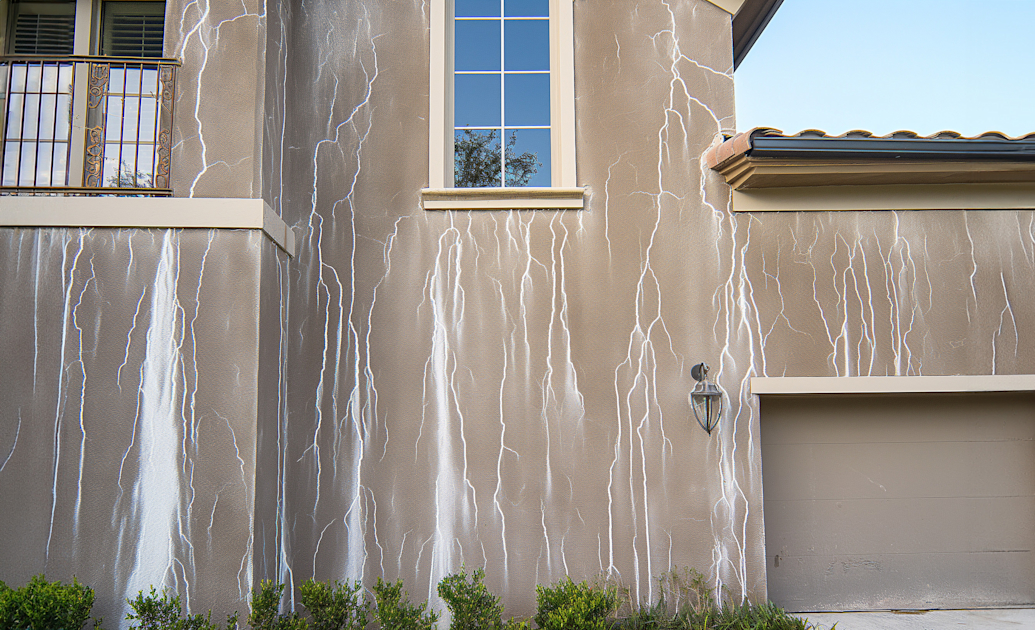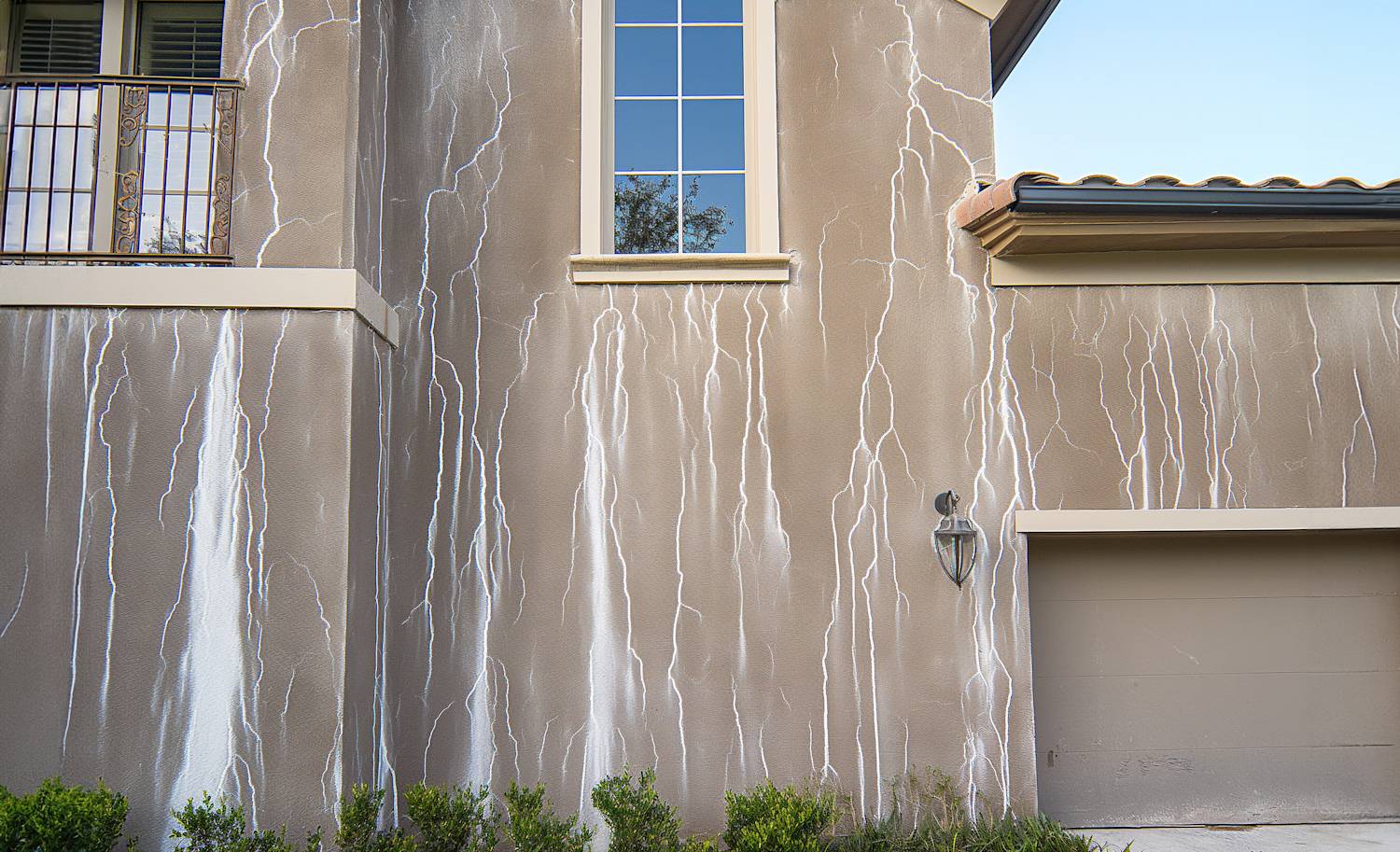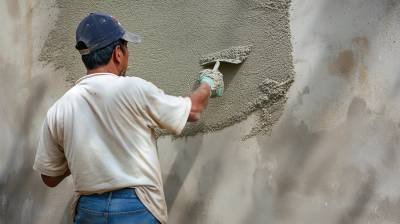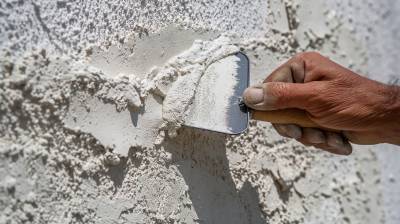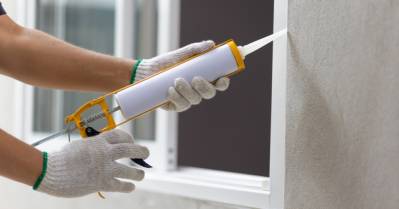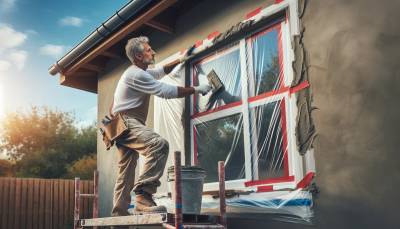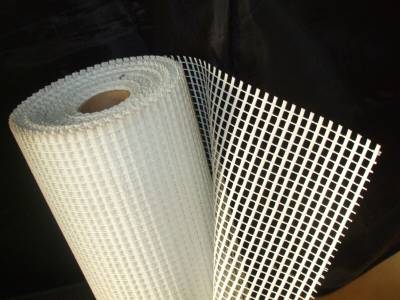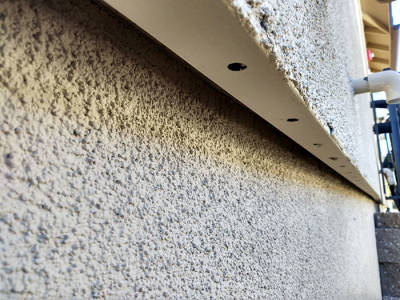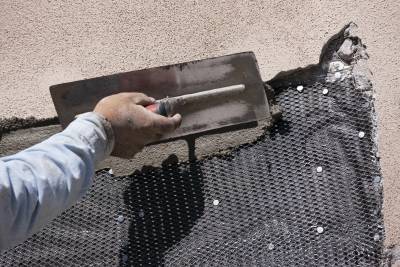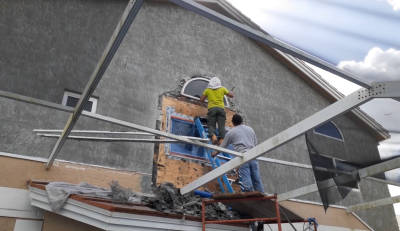Stucco efflorescence is a common concern homeowners face, especially those residing in areas with high humidity or moisture levels. If you've noticed white, powdery substance on your stucco walls, you are dealing with efflorescence. As a homeowner, it's essential to understand what it is, why it occurs, and how to prevent and remove it. In this comprehensive guide, we'll explore everything stucco efflorescence, from its causes to removal solutions.
Understanding Stucco Efflorescence
Efflorescence on stucco surfaces is a cosmetic defect that occurs when salts present in the stucco, or underlying bricks or concrete blocks, get dissolved in water and then leached out onto the surface as the water evaporates. This leaves behind a white, powdery, crystalline deposit that can be visually distressing and often misunderstood. Despite its unsightly appearance, efflorescence is primarily an aesthetic concern and does not pose a direct threat to the stucco’s structural integrity. However, it can potentially indicate underlying moisture problems that if not addressed, could damage the wall system.
Causes of Stucco Efflorescence
Understanding the root causes of stucco efflorescence is the first step towards addressing the issue. The key culprits are:
-
Moisture: Too much humidity, faulty gutters or leaks can cause excess water to enter and get trapped in the wall system.
-
Salt: The presence of soluble salts in the stucco, brick or concrete material is a prerequisite for efflorescence.
-
Evaporation: When the warm sun causes the trapped water to evaporate, the dissolved salts are left behind on the stucco surface.
Preventing Stucco Efflorescence
Preventing efflorescence involves tackling the causes highlighted above. Here are some proactive steps you can take:
-
Control moisture: Ensure good drainage around your home by installing gutters and downspouts, fixing leaks promptly, and using dehumidifiers if needed.
-
Use efflorescence-resistant products: Consider using stucco, bricks, or blocks treated to resist efflorescence if you live in a high-moisture area or are revamping your home's exterior.
-
Maintain the coating: Regularly inspect and maintain the stucco coating. A properly applied and maintained coating can block the path of water and salts towards the surface, thereby reducing efflorescence.
Removing Stucco Efflorescence
If you are already facing this issue, do not fret; there are various methods to help you get rid of stucco efflorescence.
-
Dry Brushing: For mild occurrences, simply scrubbing the efflorescence with a stiff-bristled brush can make a difference.
-
Pressure Washing: A more severe case may require pressure washing. Remember to start at a low pressure and gradually increase as needed to avoid damaging the stucco.
-
Chemical Cleaning: For stubborn efflorescence, a diluted solution of muriatic acid or a specially formulated efflorescence remover can be used. Always use chemicals with caution, as they can be harmful to you or the environment if misused.
When to Seek Professional Help
While minor efflorescence can be addressed using DIY methods, if you're consistently battling with stucco efflorescence, or if it's accompanied by other signs of moisture damage like mold or wet spots, it's recommended to seek help from a professional. Experts can accurately diagnose the cause, recommend appropriate repairs and offer long-term solutions.
Take Home Message on Stucco Efflorescence
While it can be unsightly, stucco efflorescence is typically not a grave concern. However, if you notice continuous efflorescence despite repeated cleanings, or if it's coupled with other signs of moisture damage, it's crucial to consult a professional. Adequate maintenance and proactive moisture management are your best line of defense against stucco efflorescence. Stay informed, proactive, and diligent in your home maintenance, and your stucco walls will thank you!
FAQs about Stucco Efflorescence
Why Does Stucco Efflorescence Occur?
Stucco efflorescence happens when water seeps into the porous stucco surface and dissolves the salts present in the material. When the water evaporates, it leaves behind the salts, which then crystallize on the surface of the stucco, creating the white, powdery residues known as efflorescence. Environmental factors such as constant rain, humidity, moisture-laden winds and poor building drainage can all contribute to this issue.
Does Stucco Efflorescence Affect the Stucco Structurally?
Although stucco efflorescence is mainly an aesthetic issue, it can give indications of bigger underlying problems. Generally, efflorescence itself doesn't weaken stucco or harm its structural integrity. However, the moisture penetration that causes efflorescence, if ignored, can lead to severe damages like cracking or crumbling over time.
Is Stucco Efflorescence Harmful?
Stucco efflorescence is not inherently harmful to humans or pets but can be a nuisance because of its unappealing appearance. However, if there's a constant occurrence of efflorescence, it might be indicating a serious moisture issue, which could lead to mold, mildew or other harmful biological growth if not addressed.
How Can I Clean Stucco Efflorescence?
Stucco efflorescence can normally be removed with a stiff brush and clean water. In tougher cases, a mild acid solution can be used, but it's essential to rinse it off thoroughly to prevent any damage to the stucco. In any case, remember to counter the root cause i.e., water infiltration, to prevent recurring efflorescence.
How Can I Prevent Stucco Efflorescence?
Preventing stucco efflorescence can be achieved through proper setup and maintenance. Ensure your stucco is sealed and painted appropriately to deter water absorption. Fix any drainage issues and spots that pool water immediately. A well-ventilated design can keep interior humidity levels low and lessen the risk of external water penetration.
Is It a DIY Job to Fix Stucco Efflorescence?
While minor stucco efflorescence can be cleaned off by homeowners, chronic efflorescence or underlying moisture problems often require professional help. Improper cleaning can potentially damage stucco and make the situation worse. Thus, it is always better to consult with a professional if you're unsure.
When Shall I Hire a Professional to Handle Stucco Efflorescence?
When stucco efflorescence is recurring or widespread, it's best to hire a professional. The presence of efflorescence in such cases may indicate serious water infiltration issues that need professional assessment and repair. Professionals can identify the source of the moisture, solve it, and restore the aesthetic appeal of your stucco.
Will Sealing the Stucco Prevent Efflorescence?
Sealing your stucco may help prevent efflorescence by creating a barrier against water absorption. However, if the sealant is not applied correctly, it could trap moisture, exacerbating the efflorescence problem. Thus, it's crucial to ensure proper and professional sealing application.
Does All Stucco Get Efflorescence?
No, not all stucco gets efflorescence. However, stucco, by its nature, is a porous material and susceptible to water infiltration. In environments with high humidity or rainfall, the likelihood of efflorescence is increased. Still, with the right precautions the occurrences of stucco efflorescence can be minimized.
What is the Difference between Mold and Stucco Efflorescence?
Mold and stucco efflorescence can look quite similar, but they're different. Mold is a fungus that indicates a serious moisture problem and can be harmful to health, while efflorescence is simply salt deposits left from evaporated water. Usually, efflorescence forms a white, powdery or crystalline deposit on the surface, while mold tends to be blue, green, or black and may have a foul smell.
Summary
Stucco efflorescence is a common problem experienced by homeowners, but it's not necessarily a critical issue. It may be a cosmetic eyesore, but it doesn't lead to bigger structural issues. However, consistent appearance of stucco efflorescence may call for professional help to eliminate the fundamental source of moisture and prevent any potential harm.
The problem of stucco efflorescence is mitigable with steps like good installation methodology, usage of high-quality materials, and impeccable waterproofing practices. Be aware though, that efflorescence may continue to recur if the root causes aren't completely addressed. It's always better to consult an expert if you do not possess the required expertise.
While stucco efflorescence can be a pain to deal with, it provides valuable signals about moisture issues that could be lurking unseen. Pay close attention to these tell-tale signs. Above all, remember that regular maintenance and timely repairs are critical to maintaining the longevity and aesthetics of your stucco walls.
About Atlas Stucco
Welcome to Atlas Stucco! Based in Sacramento, CA, we are your go-to business for reliable stucco work. Our company is known for its commitment to outstanding craftsmanship, service excellence, and dedication to the clients we serve. For several years, Atlas Stucco has been transforming spaces, creating stunning exteriors that showcase uniqueness and durability. If you're looking for a stucco application, re-stucco, or repair in the Sacramento region—Atlas Stucco is here to help!
Tags: Stucco Maintenance, Stucco Repair, Building Materials,

